Walkability is a hallmark of the most vibrant U.S. cities. Here's how Louisville ranks
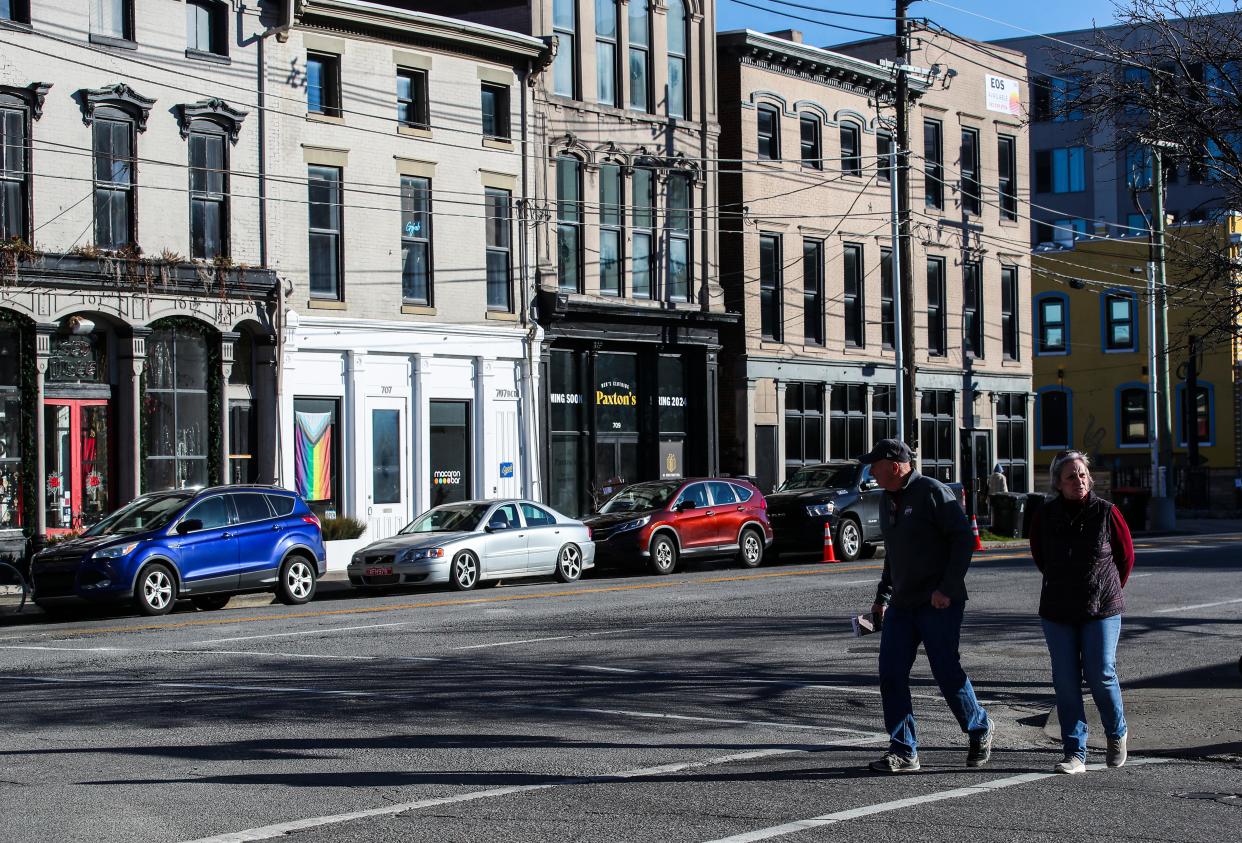
Much of Louisville, dissected by expressways and riddled with parking lots, relies on the automobile.
About 81% of Jefferson County workers drive to work, according to 2022 census estimates. Nearly 73% drive alone instead of carpooling. And walkability assessments of neighborhoods across the county show some amenities are inaccessible without a vehicle.
Louisville's car dependency has driven millions of tons of carbon dioxide-equivalent greenhouse gas emissions in recent years, based on local estimates from Google's Environmental Insights Explorer. And traffic accidents have killed more than 800 people and injured thousands more on Louisville roadways since 2016, according to Vision Zero Louisville data.
But urban design in Louisville neighborhoods can make them more walkable — a quality that's not only increasingly in demand, but also comes with economic benefits, research shows.
"Walkability is the ability to access most, if not all, your basic needs without it being an absurd walk, and having that whole journey feel safe," said Sean Willis, a research technologist at the University of Louisville's Urban Design Studio.
Quantifying walkability across different neighborhoods or cities is challenging, and different sources rank Louisville's walkability in different ways. But in general, much of the city remains car-dependent, and research suggests improving walkability could be important to Louisville's future prosperity.
Here's a look at Louisville's walkability, and where improvements might be made:
Which Louisville neighborhoods are most walkable?
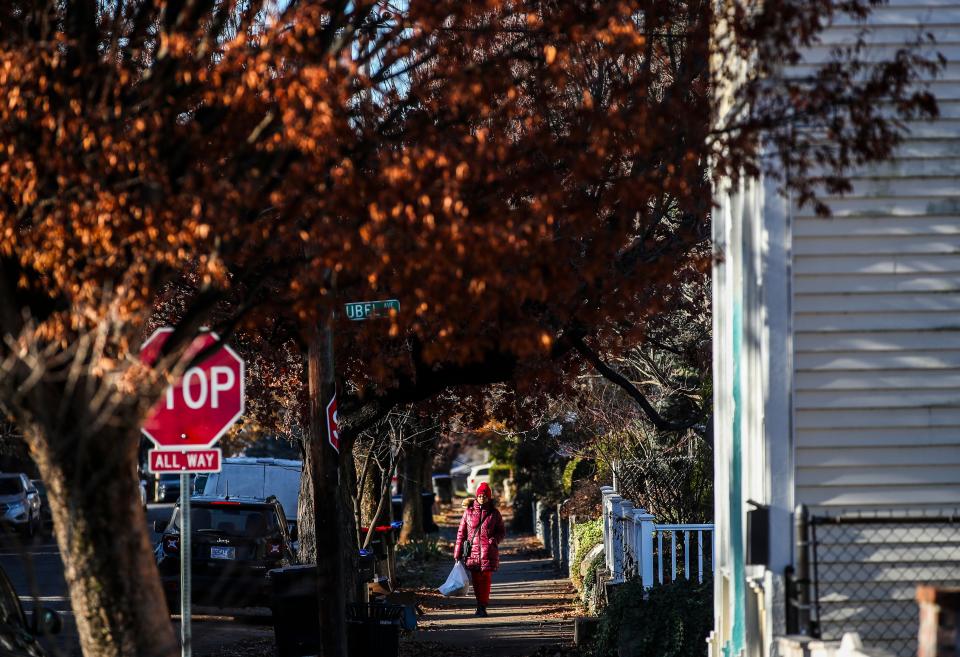
Walkable urban areas are often the beating heart of U.S. metros.
These often high-density areas "deliver outsized economic performance" in the nation's biggest cities, according to a report from the Center for Real Estate and Urban Analysis at George Washington University. And other research has pointed to the potential benefits of walkable communities for health, happiness and sense of community.
Walk Score, a Redfin subsidiary that ranks cities by walkability, puts Phoenix Hill, the Central Business District and the Highlands among Louisville's most walkable neighborhoods.
Outlying, more suburban parts of Jefferson County, such as Fairdale and Highview, were ranked as far more car-dependent.
Scores are calculated based on walkable access to amenities, as well as "pedestrian friendliness," which weighs factors like population density and block length, according to the site.
Safety and comfort while walking are also key factors in walkability. Shelbyville Road in St. Matthews is lined with amenities, but this commercial district is split down the middle by six lanes of fast-moving traffic in some places.
"You shouldn't feel like you're risking your life to go to Trader Joe's," Willis said.
Pedestrians tend to feel safer around smaller roads with slower traffic. Improved tree canopy and green space in urban areas can help, too.
"And it's about the interest of walk," said Patrick Piuma, director of the Urban Design Studio. "I would say most of downtown, it might be walkable. But do you want to walk past blocks and blocks of surface (parking) lots to get to where you're going?"
Piuma emphasized not everyone wants to live in a dense, walkable environment, and plenty of people prefer the space of the suburbs. But today, Louisville doesn't offer enough walkable places, he said.
How does Louisville's walkability compare to other cities?
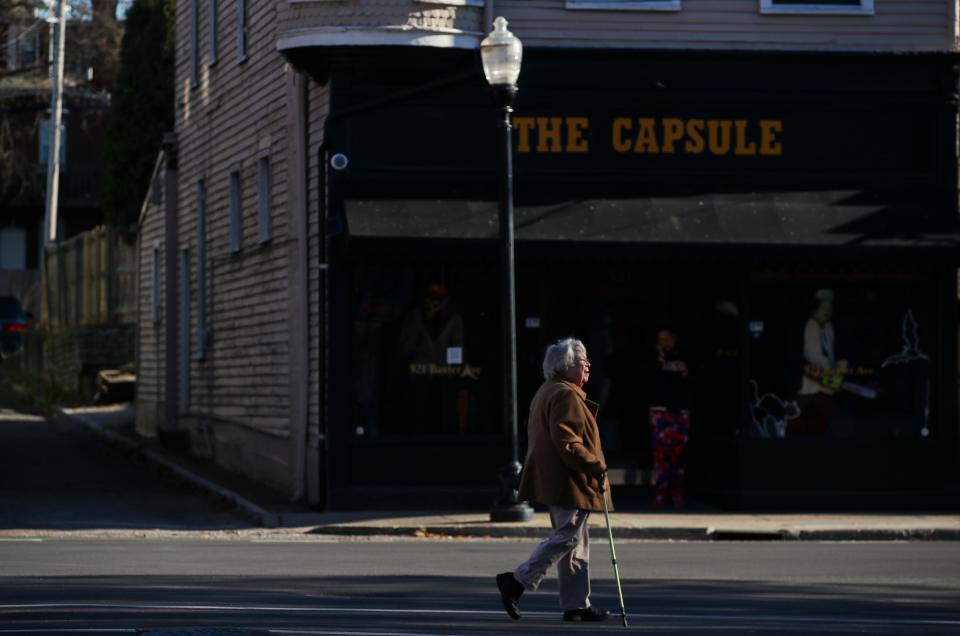
Louisville's walkability falls in the bottom half of the U.S. metro areas ranked by Walk Score.
Lexington scored the same as Louisville, and Cincinnati boasts a higher overall score. Indianapolis and Nashville ranked lower.
The U.S. Environmental Protection Agency also has a National Walkability Index, useful for visualizing walkability differences between rural or suburban areas versus high-density city centers.
The agency's report points out the benefits of walkability not only to human health, but also to environmental footprint and other costs.
"Compact, walkable neighborhoods can help conserve natural resources and reduce infrastructure costs because more spread-out areas need more land, roads, and utility lines per household," the report reads.
Louisville's web of historic commercial hubs, built partly around the city's "once extensive streetcar system" in a time before contemporary automobile dominance, offers the bones for more walkable neighborhoods, an analysis by Willis shows. His research compared different 20-minute neighborhoods — meaning most or all amenities can be accessed within a 20-minute walk — around these hubs.
And improving Louisville's walkability is not only an option, but a necessity, Piuma said.
Louisville is competing with other cities to be a place people want to be, especially as remote work options flourished since the COVID-19 pandemic. And restoring life to Louisville's historic commercial centers, like the Central Business District, will be key to that race.
"We need to find solutions to revitalize downtown," Piuma said. "We have to do something. We can't not do anything."
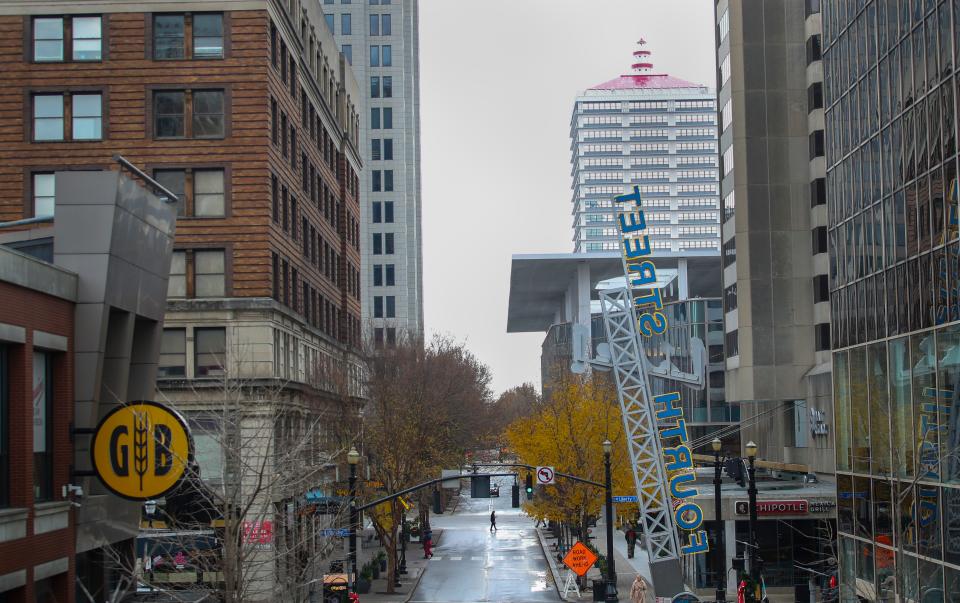
Louisville's opportunities for walkability improvements
Louisville's downtown has shown a slower recovery from the COVID-19 pandemic than nearly any U.S. metro, according to research from the University of Toronto’s School of Cities.
And the revitalization of downtown as a place where people want to live, or at least spend their time, could partly be related to a chicken-and-egg question of walkability and place-making, Willis said.
"People want to live where there's amenities," he said, "but people will build amenities where people live."
Several new developments are coming to downtown, and Mayor Craig Greenberg's recently unveiled economic development strategy includes $100 million to "redesign downtown streetscapes," among other ambitions.
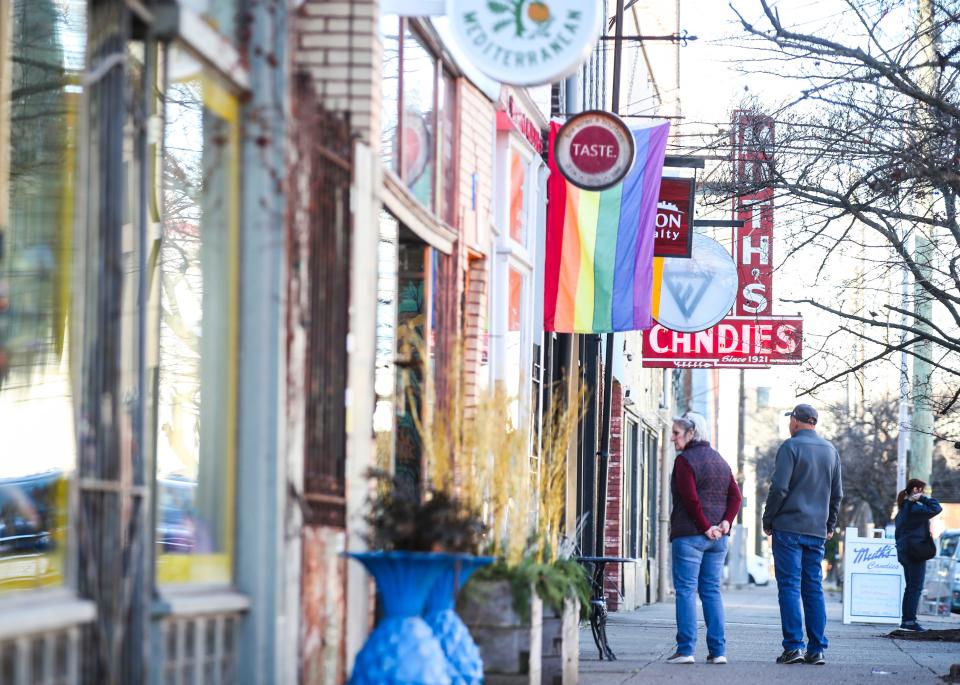
And the Central Business District is only one of Louisville's community "nodes," as identified in Willis' research. He notes 28 locations, including communities like Norton Commons and NuLu, which have seen more recent investments.
But he also highlighted other historically significant nodes to the west, including in neighborhoods that have seen less investment over the years. A collection of storefronts and amenities form a meaningful community hub at 28th and Dumesnil streets, where a locally led "quiet renaissance" has unfolded in the heart of the Parkland neighborhood, The Courier Journal reported last year.
"Historically, people congregated in these spaces for a reason," Willis said. "You don't have to overcomplicate things ... There's a lot of historic urban centers (where) people would want to be."
Connor Giffin is an environmental reporter for The Courier Journal and a corps member with Report for America, a national service program that places journalists in local newsrooms to report on under-covered issues. The program funds up to half of corps members’ salaries, but requires a portion also be raised through local community fundraising. To support local environmental reporting in Kentucky, tax-deductible donations can be made at courier-journal.com/RFA.
Learn more about RFA at reportforamerica.org. Reach Connor directly at cgiffin@gannett.com or on X @byconnorgiffin.
This article originally appeared on Louisville Courier Journal: Louisville walkability rankings show room for improvements

